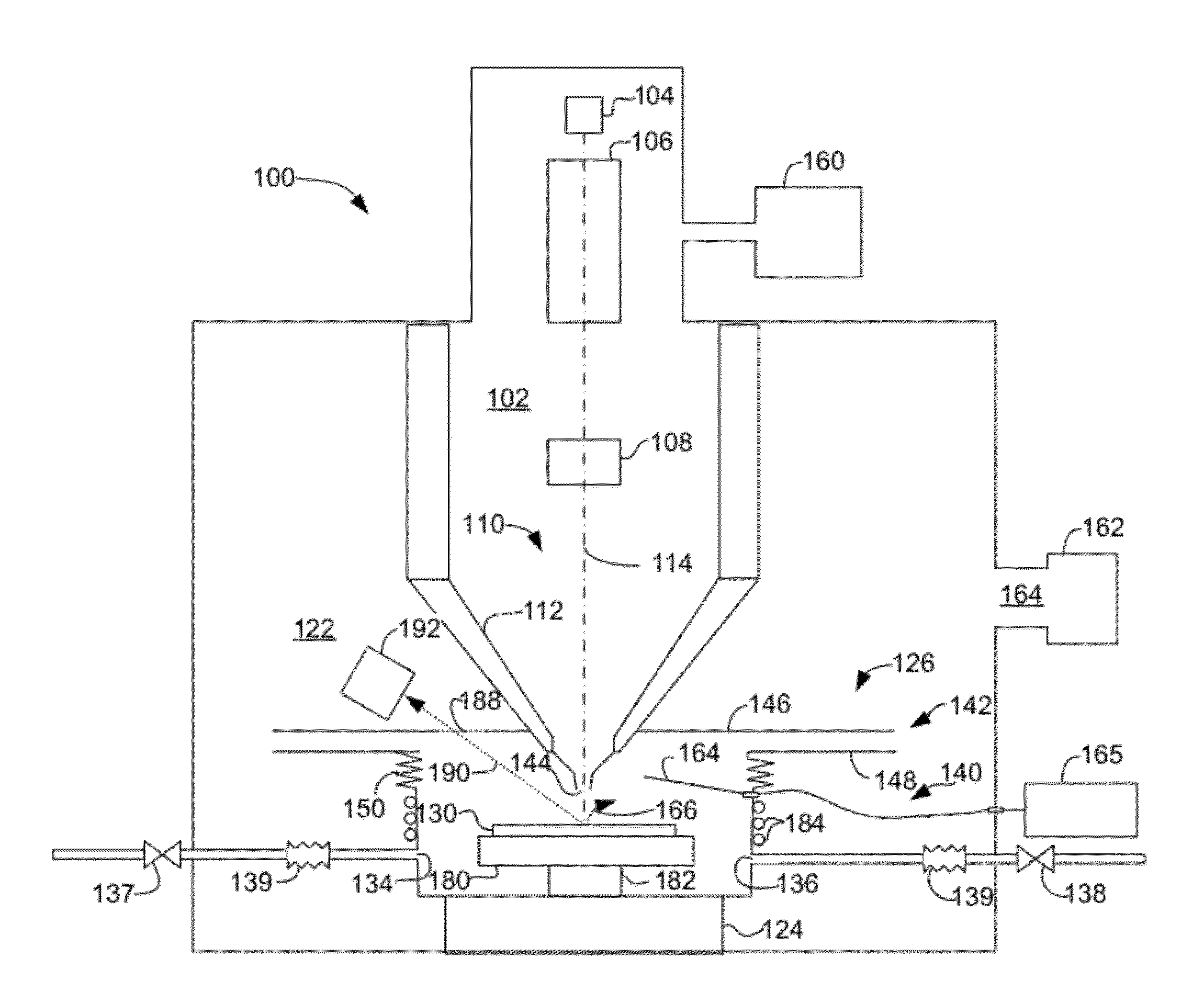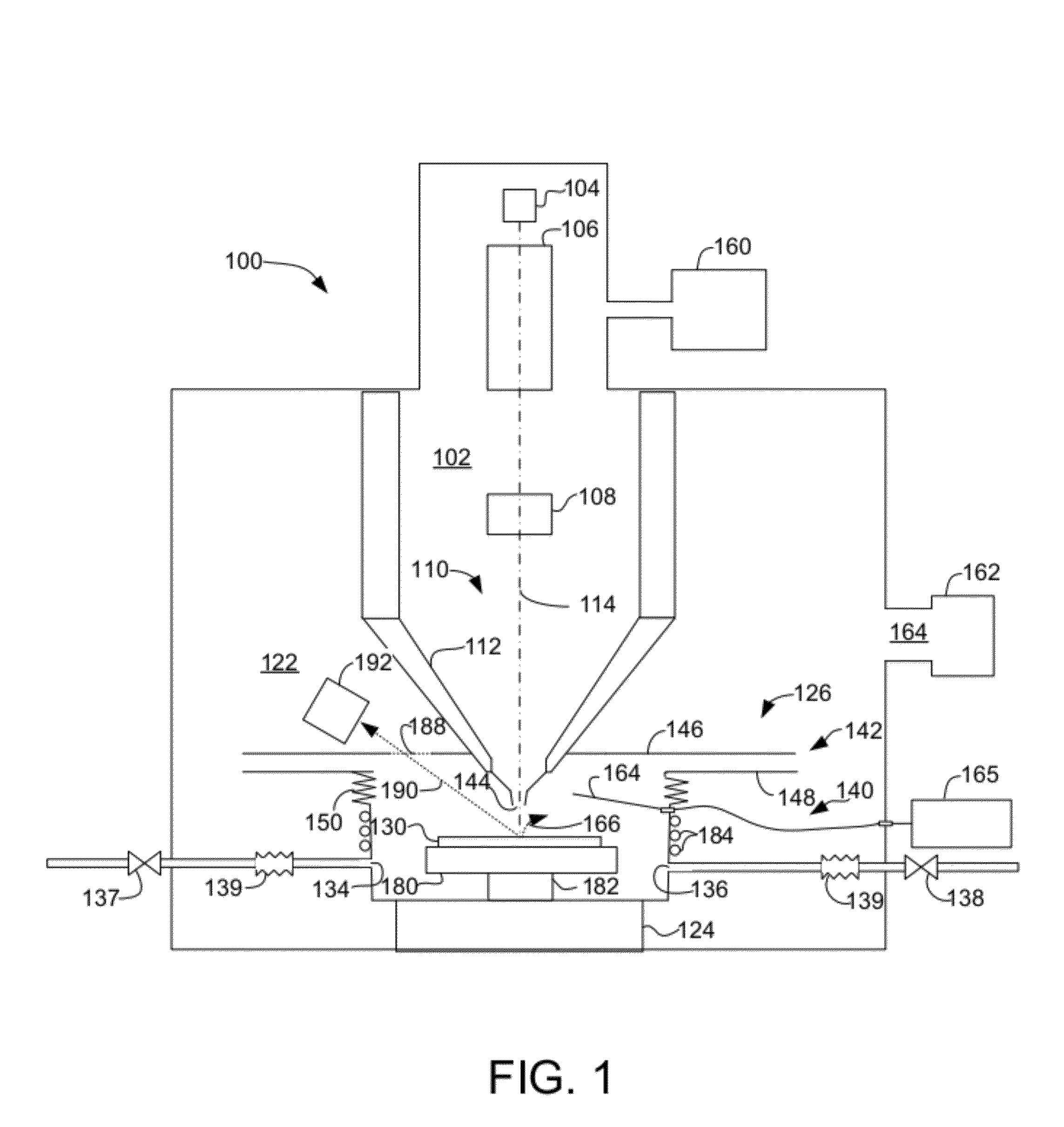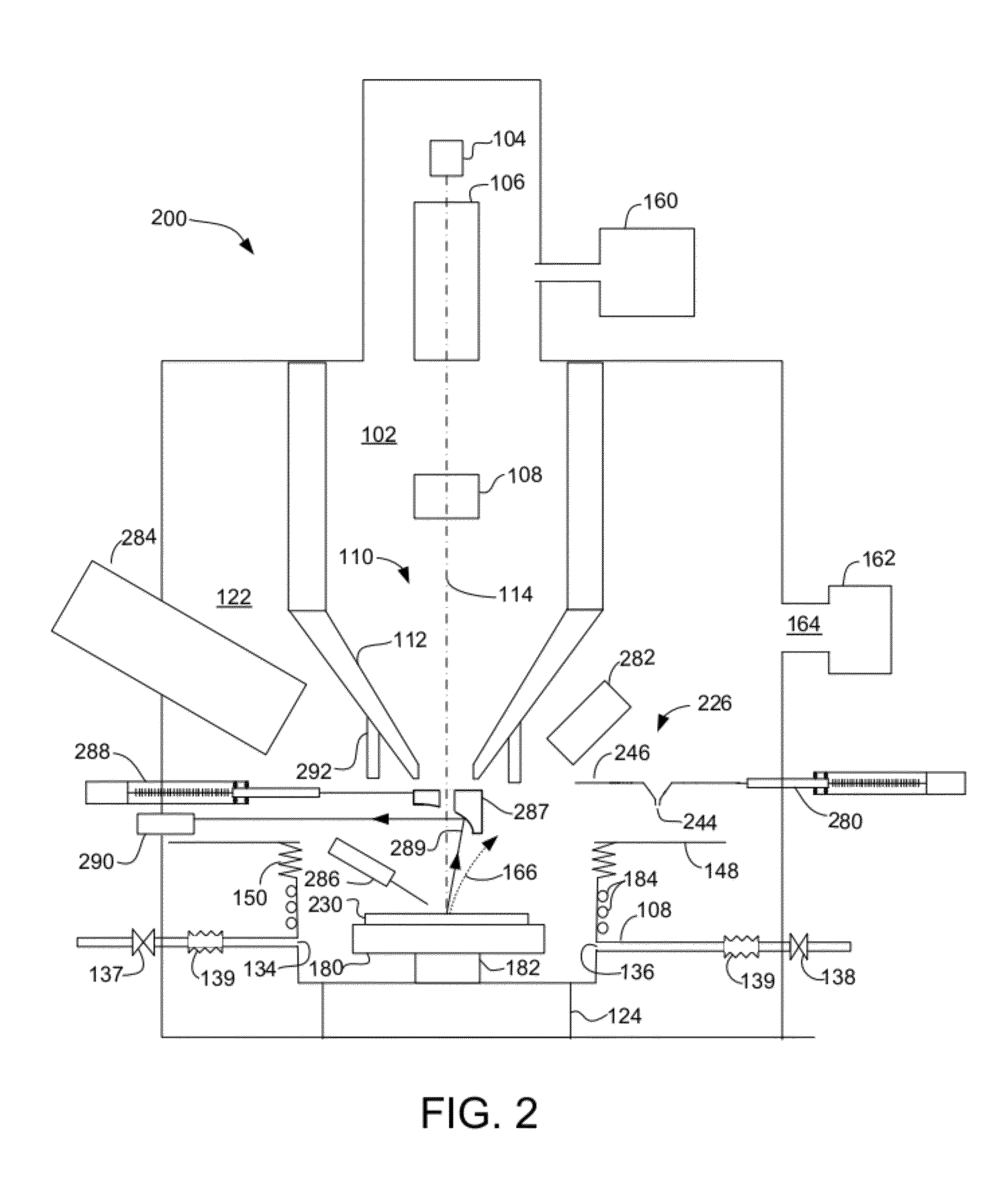Environmental Cell for Charged Particle Beam System
a charge-beam system and charge-beam technology, applied in the field of charge-beam systems, can solve the problems of interference with the operation of hpsem, problems such as problems such as biological samples that are not suitable for observation in high vacuum, and can not be used in high vacuum. , to achieve the effect of rapid cell environment switching, flexible, and rapid pumping of the cell interior
- Summary
- Abstract
- Description
- Claims
- Application Information
AI Technical Summary
Benefits of technology
Problems solved by technology
Method used
Image
Examples
Embodiment Construction
[0034]One aspect of embodiments of the present invention is a charged particle beam system that provides for processing a sample in a gaseous environment. Various embodiments of the invention may provide additional capabilities. In one embodiment, the invention provides an environmental cell for processing a work piece in a relatively high pressure in a charged particle beam system. The cell environment may include one or more gas inlets and outlets and a secondary electron detector that uses gas ionization cascade amplification. In some embodiments, the cell is configurable to remove cell portions, such as a cell lid or one or more cell walls, to facilitate various types of processing or analysis and flexible process workflows in addition to high pressure scanning electron microscopy.
[0035]One preferred embodiment includes a gas seal that allows an environmental cell mounted on a sample stage to be moved independently of the pressure limiting aperture that maintains a higher pressu...
PUM
| Property | Measurement | Unit |
|---|---|---|
| pressure | aaaaa | aaaaa |
| pressure | aaaaa | aaaaa |
| pressure | aaaaa | aaaaa |
Abstract
Description
Claims
Application Information
 Login to View More
Login to View More - R&D
- Intellectual Property
- Life Sciences
- Materials
- Tech Scout
- Unparalleled Data Quality
- Higher Quality Content
- 60% Fewer Hallucinations
Browse by: Latest US Patents, China's latest patents, Technical Efficacy Thesaurus, Application Domain, Technology Topic, Popular Technical Reports.
© 2025 PatSnap. All rights reserved.Legal|Privacy policy|Modern Slavery Act Transparency Statement|Sitemap|About US| Contact US: help@patsnap.com



